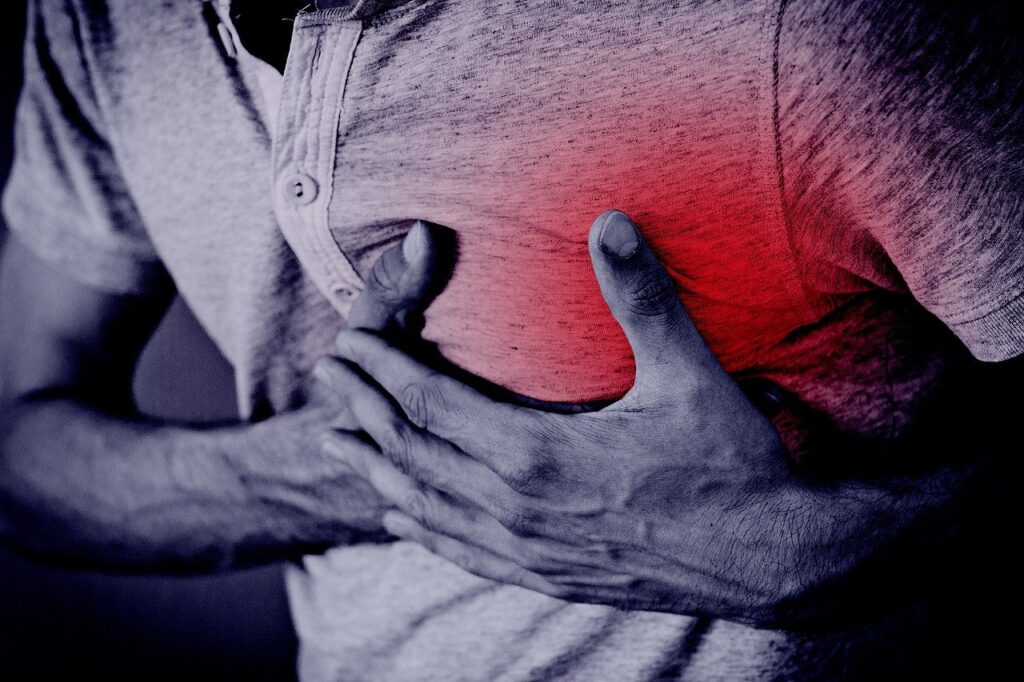
Last Updated On: October 23, 2024
Sudden cardiac arrest (SCA) symptoms can be fatal. These start from the chest pain and the heart stops beating suddenly. The blood is not pumped by your heart anymore.
Within a matter of minutes, this puts your organs and entire body at higher risk of death because your organs require a nonstop supply of oxygen, which is delivered through the blood.
Cardiopulmonary resuscitation (CPR) and defibrillation are two emergency medical procedures that are put to use in case of higher risk or possibility of bad heart health leading to sudden cardiac arrest situations.
Until an electric shock restores the normal cardiac rhythm, CPR keeps adequate oxygen in the victim’s lungs and gets it to their brain. Defibrillators (AED) and CPR can save lives. You can also take an online CPR/AED course and maximize the chances of survival for any SCA patient near you.
It is important to understand sudden cardiac arrest symptoms and that it is different from a heart attack. A heart attack is a result of a blockage in one or more coronary arteries that stops the heart from getting enough oxygen-rich blood.
The heart can be damaged when your heart cannot receive oxygen from your blood. On the other hand, sudden cardiac arrest happens due to multiple reasons. You will read about them below soon.
Heart Conditions: Issues like coronary artery disease, heart attacks, congenital heart defects, valve disorders, and cardiomegaly (enlarged heart) can lead to cardiac complications.
Arrhythmias: Irregular heartbeats, such as ventricular fibrillation or ventricular tachycardia, disrupt normal heart rhythm.
Electrolyte Imbalances: Imbalances in key minerals like potassium and magnesium, which are vital to the heart’s electrical system, can trigger heart irregularities.
Trauma: Extreme physical stress, such as electrical shocks, significant blood loss, or chest trauma, can negatively impact heart function.
Drugs and Alcohol: The use of substances like cocaine, amphetamines, or excessive alcohol consumption can increase the risk of heart problems.
Medications: Certain drugs, including antibiotics, diuretics, and heart-related medications, may heighten the risk of abnormal heart rhythms.
If prompt action is not taken during the sudden cardiac arrest, then the victim’s condition might become serious and they may become unconscious.
That’s when CPR is useful to keep the blow flow from the heart going till medical assistance arrives. If your family or friends are at risk of heart disease, consider learning CPR, so you are always prepared for an emergency.
You are more likely to get SCA if you:
Alternatively, a family history of several cases of heart attacks and sudden cardiac arrest can be the cause of this to happen to someone. One should always be aware of their health and their family history to have reality checks. One must also know about the common causes, reasons, and symptoms of any heart problem one can have. This helps to recover from and even prevent heart diseases to a certain extent.
Let’s first understand the symptoms of Sudden Cardiac Arrest. The typical warning signs of sudden cardiac arrest are immediate and severe.
1. Contact emergency medical services or call 911. If a phone is nearby and you can use it right away, call before starting CPR.
2. Assess the individual’s breathing. Start CPR only if the person isn’t breathing regularly. Attempt to give compressions on the person’s chest at a rate of 100–120 compressions per minute. If you have received CPR training, make sure the person can breathe by checking their airway and giving two rescue breaths after every 30 compressions.
3. Just keep performing chest compressions if you are untrained in CPR. Let the chest fully rise in between compressions. Do this repeatedly until a portable AED is available or help arrives.
4. Use a portable AED if required. If you are not familiar with AED, follow the step-by-step voice instructions to use it.
Sudden cardiac arrest is a critical medical emergency that requires immediate action to increase the chances of survival. Understanding the symptoms and causes, as well as recognizing who is at risk, can empower individuals to act swiftly in a crisis. Effective interventions such as CPR and the use of an AED are vital until professional medical help arrives.
By educating ourselves about these concepts, we not only enhance our preparedness for emergencies but also contribute to the overall awareness of heart health in our communities. Being proactive, through knowledge and training, can ultimately save lives in situations of sudden cardiac arrest.